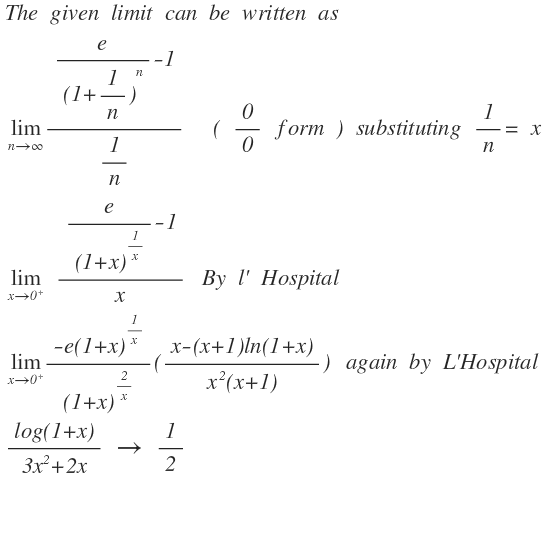This section requires Javascript.
You are seeing this because something didn't load right. We suggest you, (a) try
refreshing the page, (b) enabling javascript if it is disabled on your browser and,
finally, (c)
loading the
non-javascript version of this page
. We're sorry about the hassle.

I am a little short on time so i will just give a quick insight to what I did. Take the LCM of the expression n → ∞ lim ( n + 1 ) n n n + 1 e − n ( n + 1 ) n Divide numerator and denominator by n n + 1 , n → ∞ lim n 1 ( 1 + n 1 ) n e − ( 1 + n 1 ) n Substitute n 1 = x and change the limit as, x → 0 lim x ( 1 + x ) x 1 e − ( 1 + x ) x 1 Now since lim x → 0 ( 1 + x ) x 1 = e therefore we have the 0 0 form which can be easily analyzed with L Hopitals rule. One formula which you may use while applying L Hopitals rule is x → 0 lim x l n ( 1 + x ) = 1